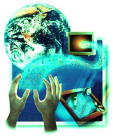|
Assessment Alternatives
Teachers that integrate multiple
intelligences activities into classroom instruction often turn to
alternative assessments. Learning tasks that emphasize different
intelligences may lead to more creative assessment strategies.
Performance Tasks
Performance tasks that offer
elements of student involvement and student choice work well as
assessments for MI activities. Performances ask students to apply what
they have learned, often using real-life applications for authentic
real-world problems. Performance tasks serve as systematic methods for
assessing skills and applied knowledge.
Criteria and Scoring Rubrics
Meaningful assessments strive to
measure in-depth understanding of key concepts, core knowledge, and
target skills. First, teachers should establish appropriate criteria
for these assessments. Students can be invited to participate in this
process. Scoring rubrics that reflect these criteria are an effective
way to measure performance on designated tasks.

Sample Ideas for Assessment of
MI Activities
Each can be
assessed with an analytical rubric that reflects established criteria
Sample Rubric
SPECIFIC
CRITERIA |
4=comprehensive and detailed |
3=partially complete, lacks detail |
2=incomplete, few details |
1=insufficient or inaccurate |
| list here |
|
|
|
|
| list here |
|
|
|
|

LINGUISTIC
- Give a
speech, make an oral presentation
- Write
and/or tell a narrative story
- Develop
and present a report on a topic
LOGICAL-MATHEMATICAL
- Graph
important numerical data from the unit of study
- Create a
Venn diagram to compare two concepts or representative ideas
- Compile
numerical data, analyze data, and draw conclusions
BODILY-KINESTHETIC
- Dramatize a situation or scene
(active role playing)
- Represent target concepts with
body language and physical movement
- Show relationships through
dance or mime
VISUAL-SPATIAL
- Create diagrams and charts
representing target content
- Build puzzles with graphic
elements to reinforce critical concepts
- Draw pictures or take photos
construct a visual essay related to the unit of study
NATURALIST
- Record outdoor observations
that serve as representative analogies for identified concepts or
target vocabulary
- Develop a project that
involves flora or fauna
- Draw observations of the
natural world
MUSICAL-RHYTHMICAL
- Write a song with lyrics
related to the unit of study
- Present a rhythmical
representation of target vocabulary, phrases, or "chunks" of
language
- Share an original rap song
that reinforces important ideas in the unit
INTERPERSONAL
- Group storyboard to share unit
concepts
- Participation in short
teaching episodes
- Interviewing others to learn
more about the target content
INTRAPERSONAL
- Samples
from journal writing
- Self-evaluation
of selected items
- Sketches
(pictoral or linguistic) that relate personal experiences to target
content
|

